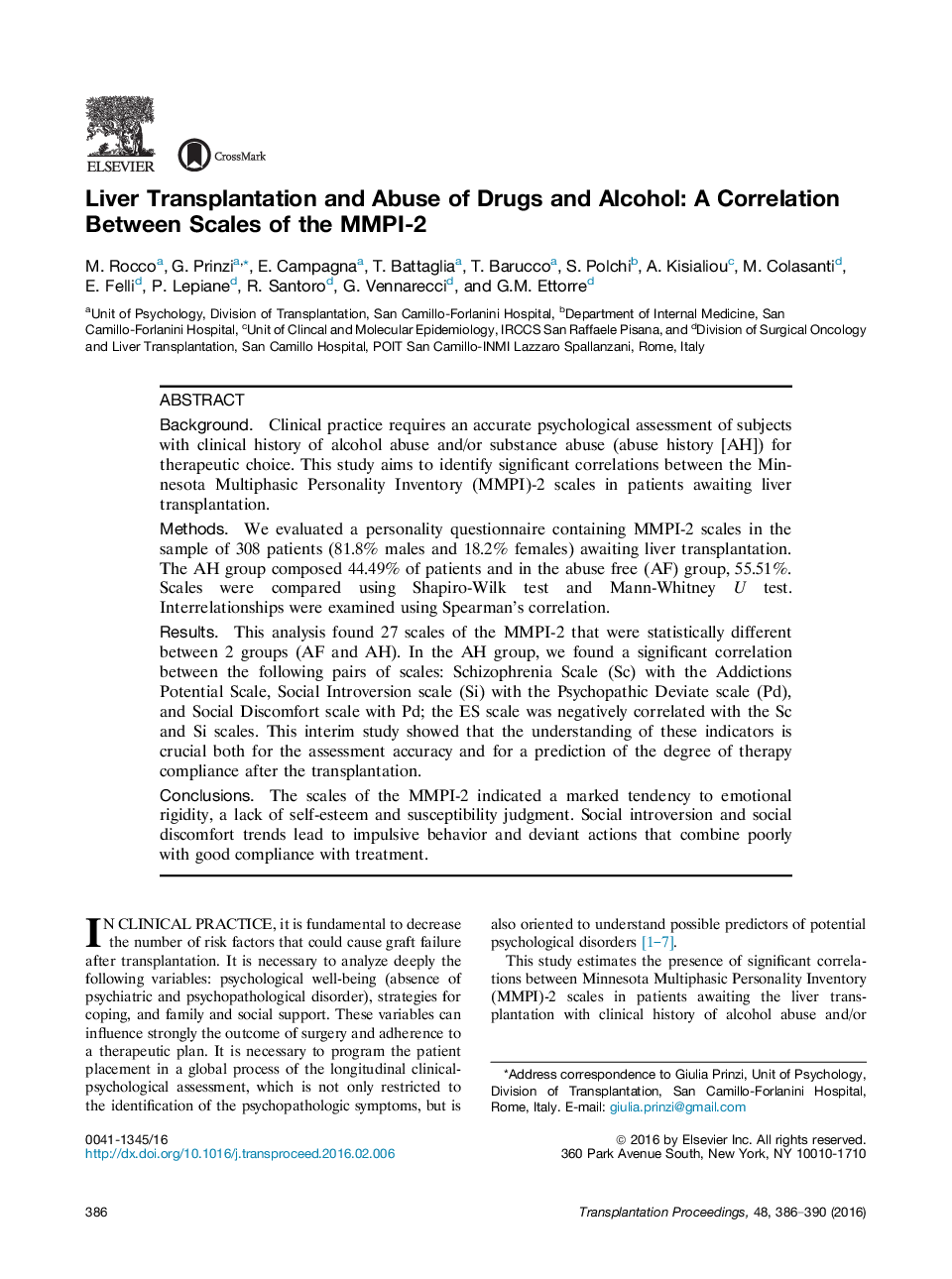| Article ID | Journal | Published Year | Pages | File Type |
|---|---|---|---|---|
| 6246897 | Transplantation Proceedings | 2016 | 5 Pages |
â¢MMPI-2 scales were studied in AH patients awaiting transplantation.â¢This study found a significant positive correlation between AH patients and poor compliance with therapy.â¢Appropriate clinical AH patient assessment is indicated to specify a therapy profile.â¢MMPI-2 predicts adherence with therapy and informs posttransplant coping strategies.
BackgroundClinical practice requires an accurate psychological assessment of subjects with clinical history of alcohol abuse and/or substance abuse (abuse history [AH]) for therapeutic choice. This study aims to identify significant correlations between the Minnesota Multiphasic Personality Inventory (MMPI)-2 scales in patients awaiting liver transplantation.MethodsWe evaluated a personality questionnaire containing MMPI-2 scales in the sample of 308 patients (81.8% males and 18.2% females) awaiting liver transplantation. The AH group composed 44.49% of patients and in the abuse free (AF) group, 55.51%. Scales were compared using Shapiro-Wilk test and Mann-Whitney U test. Interrelationships were examined using Spearman's correlation.ResultsThis analysis found 27 scales of the MMPI-2 that were statistically different between 2 groups (AF and AH). In the AH group, we found a significant correlation between the following pairs of scales: Schizophrenia Scale (Sc) with the Addictions Potential Scale, Social Introversion scale (Si) with the Psychopathic Deviate scale (Pd), and Social Discomfort scale with Pd; the ES scale was negatively correlated with the Sc and Si scales. This interim study showed that the understanding of these indicators is crucial both for the assessment accuracy and for a prediction of the degree of therapy compliance after the transplantation.ConclusionsThe scales of the MMPI-2 indicated a marked tendency to emotional rigidity, a lack of self-esteem and susceptibility judgment. Social introversion and social discomfort trends lead to impulsive behavior and deviant actions that combine poorly with good compliance with treatment.
